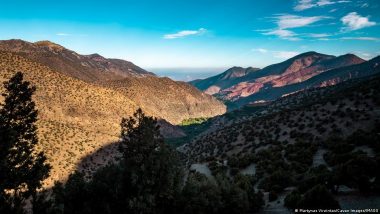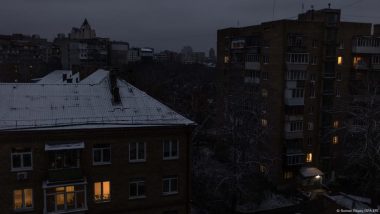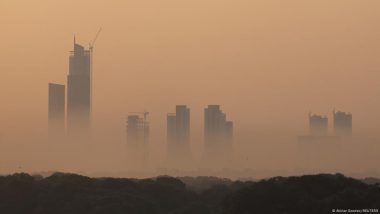Worldwide, many regions are afflicted with frequent earthquakes. The Atlas Mountains in Morocco are a regular site of heavy plate-tectonic activity.An earthquake measuring 6.8 on the moment magnitude scale (MMS) has shaken Morocco. With its epicenter in the Atlas Mountains, about 70 kilometers (40 miles) from Marrakech, the earthquake was also felt in neighboring Algeria and as far north as Portugal.
Also Read | Chandrayaan 3 on Moon: Chandrayaan-2 Orbiter Takes a Photograph of Vikram Lander (See Pic).
The Atlas Mountains span about 2,300 kilometers across Morocco, Algeria and Tunisia. Known as fold mountains, they were created by the collision of tectonic masses: the Eurasian Plate to the north and the African Plate to the south.
Also Read | India and US Begin Talks To Send Indian Astronaut to International Space Station in 2024.
"The Atlas Mountains are on the border between the two plates and are therefore a known as earthquake zone," said Fabrice Cotton, a professor of seismology at the German Research Centre for Geosciences in Potsdam.
How earthquakes happen
The Earth's crust is formed like a jigsaw puzzle, with different individual pieces slotting together. There are some gigantic oceanic plates and several smaller continental plates. Exactly how many small and very small tectonic plates there are is subject to scientific debate.
All of these plates are "swimming" in the molten core of the Earth. Because magma swells from the core at certain fracture points, the plates have shifted and migrated a few centimeters every year for billions of years. They move away from each other, rub against each other or push up against each other, causing the continent above them to move. Such movements are known as plate tectonics.
These tectonic shifts regularly cause plates to collide. When the resulting tension that builds up in the plate's rock become too great, they can fracture and parts break away with a jolt. Waves of pressure emanate from this epicenter and reach the Earth's surface, where they are felt as earthquakes.
Regions that fall on fault lines, where tectonic plates meet, are therefore particularly prone to earthquakes. Any quake reaching 5.0 or above on the MMS can cause visible damage to buildings, for example.
If a quake happens under an ocean, tsunamis may occur. These high-velocity, expanding waves can cause deadly flooding if they hit the mainland. It is very, very difficult to predict quakes in such regions due to constant seismic activity, Cotton said.
Powerful earthquakes are nearly always followed by smaller aftershocks, which occur because the tectonic plates at the epicenter continue moving until they eventually settle again. Aftershocks, too, can cause serious damage. Buildings that were damaged during the original quake may collapse, leading to more deaths, injuries and displacement.
"The only way to protect people from earthquakes is to build earthquake-proof buildings," Cotton said.
This article was originally written in German.
(The above story first appeared on LatestLY on Sep 10, 2023 01:30 AM IST. For more news and updates on politics, world, sports, entertainment and lifestyle, log on to our website latestly.com).













 Quickly
Quickly





















